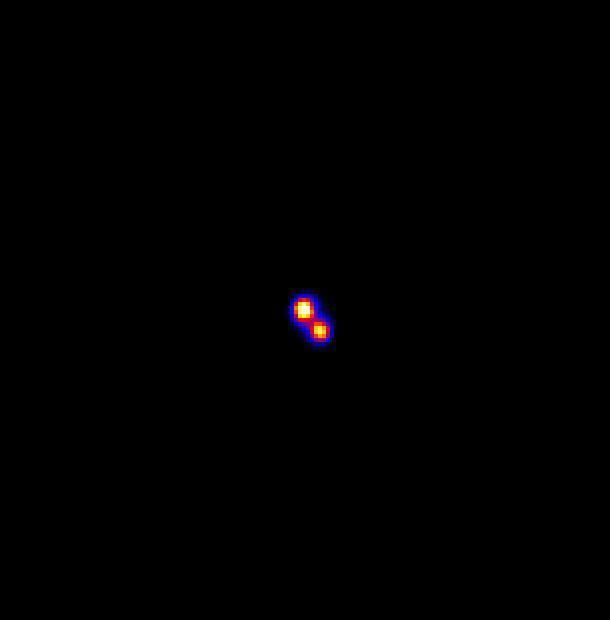Observation arc 109.49 yr (39991 d) Discovered 17 October 1906 Discoverer August Kopff | Discovery date 17 October 1906 Adjectives Patroclean Orbital period 12 years Orbits Sun | |
 | ||
Alternative names 1906 VY; 1941 XC;1962 NB Discovery site Heidelberg-Königstuhl State Observatory Similar | ||
617 Patroclus (/pəˈtroʊkləs/ pə-TROH-kləs) is a binary minor planet made up of two objects of similar size orbiting their barycenter. It is a Jupiter trojan. It was discovered in 1906 by August Kopff, and was the second trojan to be discovered. Its binary nature was discovered in 2001; the name Patroclus now refers to the larger of the two components, whereas its slightly smaller companion body has been named Menoetius (/mᵻˈniːʃəs/ mə-NEE-shəs, official designation (617) Patroclus I Menoetius). Recent evidence suggests that the objects are icy like comets, rather than rocky like most asteroids.
Contents
Orbit
Patroclus orbits in Jupiter's trailing Lagrangian point, L5, in an area called the 'Trojan node' after one of the sides in the legendary Trojan War (the other node, at the L4 point, is called the 'Greek node'). Patroclus is the only object in the Trojan camp to be named after a Greek character; the naming conventions for the Jupiter trojans were not adopted until after Patroclus was named (similarly, the asteroid Hektor is the only Trojan character to appear in the Greek camp).
Binary system
In 2001, it was discovered that Patroclus is a binary object, made up of two components of roughly similar size. In 2006, accurate measurements of the orbit from the Keck Laser guide star adaptive optics system were reported. It was estimated that the two components orbit around their center of mass in 4.283±0.004 d at a distance of 680±20 km in a roughly circular orbit. Combining these observations with thermal measurements taken in 2000, the sizes of the components of the system were estimated. The slightly larger component, which measures 141 km in diameter, retains the name Patroclus. The smaller component, measuring 112 km, is now named Menoetius, after the legendary Patroclus's father. Its provisional designation was S/2001 (617) 1.
Composition
Because the density of the components (0.8 g/cm³) is less than water and about one third that of rock, it was suggested that the Patroclus system, previously thought to be a pair of rocky asteroids, is more similar to a comet in composition. It is suspected that many Jupiter trojans are in fact small planetesimals captured in the Lagrange point of Jupiter–Sun system during the migration of the giant planets 3.9 billion years ago. This scenario was proposed by A. Morbidelli and colleagues in a series of articles published in May 2005 in Nature.
Exploration
Patroclus is a proposed target for Lucy, a mission to several asteroids and Jupiter trojans.
